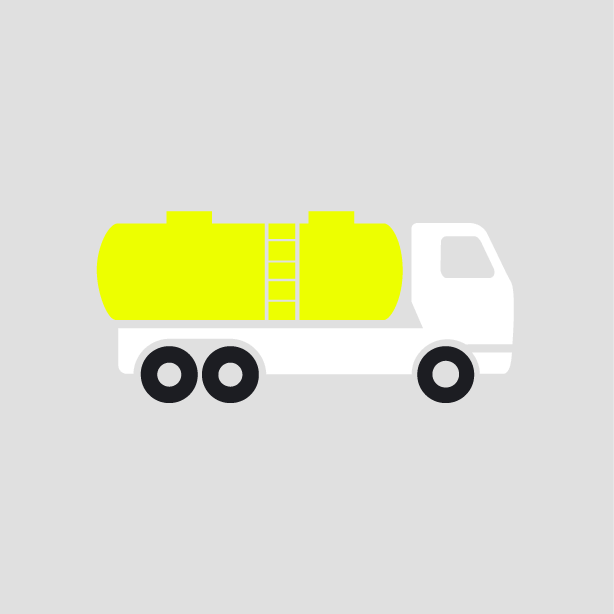-
What happened?
An operator was preparing to lift a fly camp cabin with a reach stacker crane.
A wire sling became caught on a cabin roof obstruction during installation.
While trying to release and reposition the slings, the cabin was dragged from its wooden foundation blocks.
A worker got injured and trapped between two cabins.

-
Why did it happen?
The cabins weren’t checked for roof obstructions.
There were changes to key lift crew mid-way through the work.
When the lift plan changed, communication between foreman and operator was not clear. No discussion with the lifting team to communicate changes.
Wooden blocks were used as cabin foundations (which made them more unstable).
The foreman gave the all clear signal to the operator, without being able to see if all riggers were outside the line of fire and all slings were fully released.
The injured worker was standing in the line of fire (at the sling and lift point, between two cabins).
The lifting team were fatigued due to religious fasting, lack of rest breaks and hot weather.
The job safety analysis (JSA) wasn’t discussed at the toolbox talk (TBT) before the work started.
The permit to work system had significant gaps in it.

-
What did they learn?
Fly camp cabins should only be placed directly on the ground, or onto master skids and secured.
- Review the number of cabins needed on site to minimise loads and exposure.
Use polyester slings which are easier to handle and less prone to snagging.
All workers should be aware of the hazards and controls for the task.
Workers should follow correct process (be in sight of the reach stacker operator, only approach the reach stacker if it is turned off).
Ensure clear communications between all workers. Establish a person in charge, responsible of giving instructions during lifting operations.
Working conditions in extreme weather and periods of fasting should be reviewed. Consider implementing specified rest periods and minimum work.

-
Ask yourself or your crew
Has anything like this happened on your site?
What lifting equipment do you use that could be changed for a safer option (e.g. wire sling for polyester sling)?
Is there anything on our site that has been adapted (e.g. the cabins resting on wooden blocks) that is no longer safe?
Where are the safe zones for today’s lifting operations? What other measures do we have in place to prevent this happening on our site?

Add to homescreen
Content name
Select existing category:
Content name
New collection
Edit collection
What happened?
An operator was preparing to lift a fly camp cabin with a reach stacker crane.
A wire sling became caught on a cabin roof obstruction during installation.
While trying to release and reposition the slings, the cabin was dragged from its wooden foundation blocks.
A worker got injured and trapped between two cabins.
Why did it happen?
The cabins weren’t checked for roof obstructions.
There were changes to key lift crew mid-way through the work.
When the lift plan changed, communication between foreman and operator was not clear. No discussion with the lifting team to communicate changes.
Wooden blocks were used as cabin foundations (which made them more unstable).
The foreman gave the all clear signal to the operator, without being able to see if all riggers were outside the line of fire and all slings were fully released.
The injured worker was standing in the line of fire (at the sling and lift point, between two cabins).
The lifting team were fatigued due to religious fasting, lack of rest breaks and hot weather.
The job safety analysis (JSA) wasn’t discussed at the toolbox talk (TBT) before the work started.
The permit to work system had significant gaps in it.
What did they learn?
Fly camp cabins should only be placed directly on the ground, or onto master skids and secured.
- Review the number of cabins needed on site to minimise loads and exposure.
Use polyester slings which are easier to handle and less prone to snagging.
All workers should be aware of the hazards and controls for the task.
Workers should follow correct process (be in sight of the reach stacker operator, only approach the reach stacker if it is turned off).
Ensure clear communications between all workers. Establish a person in charge, responsible of giving instructions during lifting operations.
Working conditions in extreme weather and periods of fasting should be reviewed. Consider implementing specified rest periods and minimum work.
Ask yourself or your crew
Has anything like this happened on your site?
What lifting equipment do you use that could be changed for a safer option (e.g. wire sling for polyester sling)?
Is there anything on our site that has been adapted (e.g. the cabins resting on wooden blocks) that is no longer safe?
Where are the safe zones for today’s lifting operations? What other measures do we have in place to prevent this happening on our site?
An operator was preparing to lift a fly camp cabin with a reach stacker crane. A wire sling became caught on a cabin roof obstruction during installation. The cabin was dragged from its foundation blocks, trapping a worker between two cabins.













